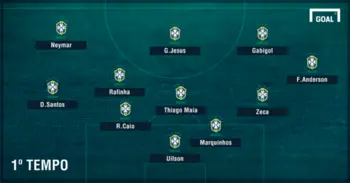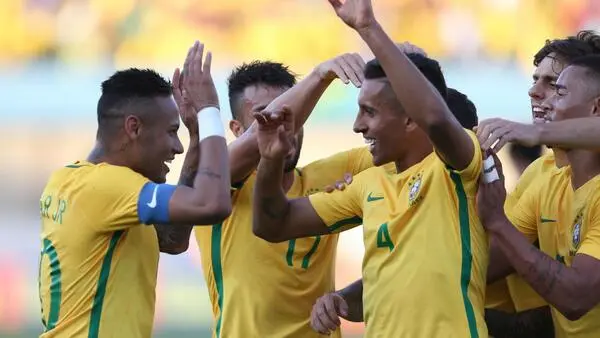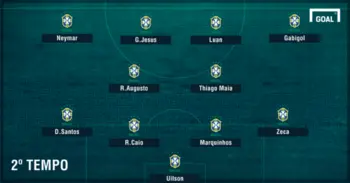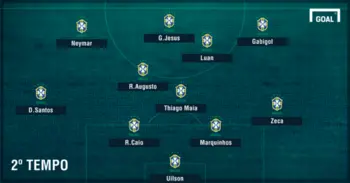Saturday's comfortable victory in Goiana saw the Olympic team take to the field for the first time with a number of variations in personnel and system
On Saturday Brazil Olympic coach Rogerio Micale saw his side take to the field for the first time ahead of the Rio games.
There were a number of encouraging signs for the new coach as goals from Gabriel ‘Gabigol’ Barbosa and Marquinhos secured a comfortable 2-0 win over Japan in Goiana.
And Micale took the chance not only to cast an eye on a number of his fringe players, but also test the different tactical systems he and his side have been working on for the last two weeks at the Granja Comary training complex.
| Initial 4-3-3/4-2-3-1 |

Brazil began with their principal 4-3-3/4-2-3-1 formation, with the only change to Micale’s preferred starting XI being the enforced change in goal after Fernando Prass was injured in the warm-up. Santos’ Thiago Maia was the only out-and-out-holding midfielder, as the coach turned away from the Selecao’s historic preference for two destroyers protecting the back four.
| Fluidity & Felipe Anderson |

The hosts dominated from the outset as Micale set his full-backs free to attack and provide added width to help compensate for his wide attackers’ preference to cut inside. Zeca and Douglas Santos constantly moved forward while Felipe Anderson drifted to the right to allow Gabigol to roam, while the constant movement of the side saw them morph into a 4-1-4-1 at times.
| Two up and cruising |

Japan largely sat back and look to stifle Brazil, which made the contest the perfect preparation ahead of Rio 2016 where it is thought most opponents will focus on frustrating Brazil in front of a home crowd desperate to see their side make up for the disappointment of World Cup 2014. Brazil took control of the match and held a well-deserved lead at the break.
| The 4-2-4 |

After half-time, we saw Micale unleash the 4-2-4 that had been one of the biggest talking points ahead of the match. It is the system with which Brazil won their first World Cup title, in 1958, and will be Micale’s go-to system at times when his side are desperate for a goal. Renato Augusto and Gremio’s Luan replaced Rafinha and Felipe Anderson as Micale’s ‘Plan B’ was given its first real test drive.
| Like it's 1958 |

Once the 4-2-4 took to the field, it did so with very little defensive cover in midfield as playmaker Renato Augusto was given the licence to get forward, leaving just Thiago Maia to protect against the counter-attack. In 1958, Mario Zagallo was key to the system – deployed initially as a wide attacker on the left, it was he who constantly moved back into midfield to a form a 4-3-3. Luan was charged with dropping in order to see the shape revert to a 4-2-3-1 at times. But Brazil suddenly looked vulnerable on the counter-attack and so if Micale is to use the formation at the games, some careful tweaks will have to made in training this week.
| Back to 4-2-3-1 |
The experiment didn’t last long. After observing his side’s vulnerability in transition, Micale quickly made changes as specialist defensive midfielder Walace replaced Gabigol as the team returned an orthodox 4-2-3-1. Renato Augusto moved forward to become the attacking midfielder as a solidity returned for the latter stages with the match already won.
..... - Goal